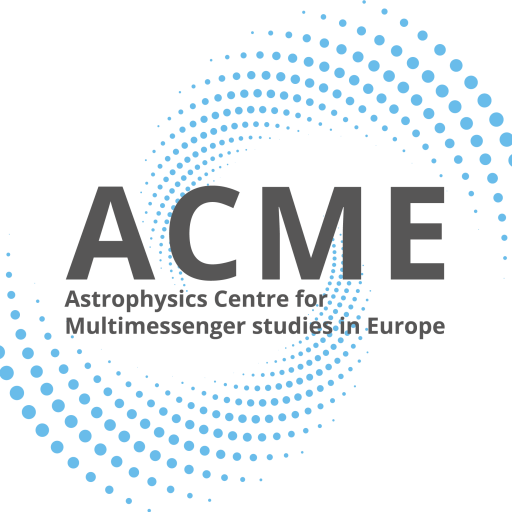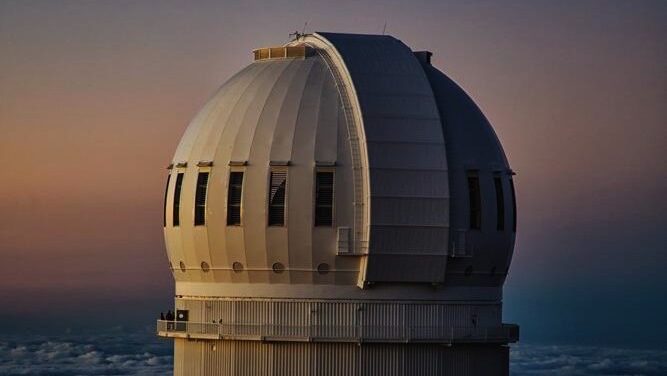CFHT is a 3.6-m diameter telescope located at the summit of Mauna Kea, a 4200-m high dormant volcano in Hawai’i. CFHT operates 100% in service observing mode and provides pre- processed data to its users. Its unique location with full coverage of the Northern Sky and portions of the Southern sky bridges a longitude gap for time domain observations. CFHT operates a total of 5 instruments, 3 wide field cameras and 2 high resolution spectropolarimeters.
MegaCam is a wide field optical camera with a 1-square degree field of view.
WIRCam is a near-infrared wide field camera with a mosaic of four infrared detectors, a field size of 20’x20’ and image resolution of 0.3”/pixel.
SITELLE is a wide field imaging Fourier Transform Spectrometer capable of producing a spectrum at each of its 4.2 million pixels in its 10 arcmin field of view.
SITELLE operates from near-UV through ~900 nm, at spectral resolutions of ~3000 – 9500. ESPaDOnS and SPIRou are two high resolution spectropolarimeters. The former operates in the optical (350- 1050 nm) and the latter in the near-infrared (950-2350 nm). They both have a spectral resolution around 70,000 and can measure the magnetic fields of nearby stars using polarimetry.
SPIRou is optimized for high-precision radial velocity measurements to a precision of ~ 1.5m.s-1. MegaCam and WIRCam are CFHT’s workhorse instruments for ACME time domain science. They are mounted approximately half of the time at the telescope, thereby offering exquisite opportunities for time domain science when combined with queue scheduling. Several time domain programs can be accommodated per typically 10-day runs without disrupting science operations.
CFHT operates 100% in service mode. Each semester, 400-500 astronomers collaborate using our proposal submission system to request time on the telescope. The typical pressure factor is between 2 and 3 and varies over time and by agency. Science programs are run in service mode, and reduced and calibrated science-ready data are delivered to PIs.
All CFHT data are archived and accessible, after a one-year proprietary period for PI programs, through the Canadian Astronomy Data Centre (CADC), a unique resource for data-intensive astrophysical research worldwide. On average, more than 200 peer reviewed papers are published every year using CFHT data. The latest examples of high scientific impact papers include the discovery of a Water World, a Dark matter mass map of the cosmic web derived using weak gravitational lensing and the discovery of an ultra-diffuse galaxy in the M81 group. In 2022, close to 500 astronomers from 250 institutions worldwide published papers using CFHT data either from their original proposals or using archival data.
Regular calls will be provided through ACME to access CFHT observation time.
Access to data:
Transnational Access to CFHT – Call is open, the deadline to receive the proposals is September 22 at 23h59 UT.
To submit your proposal, go to:
https://www.cfht.hawaii.edu/en/science/Proposals/
ACME proposals should be submitted as regular CFHT proposals submitted to the French Agency. User groups that generated results under this programme should acknowledge ACME support in any resulting publications.

